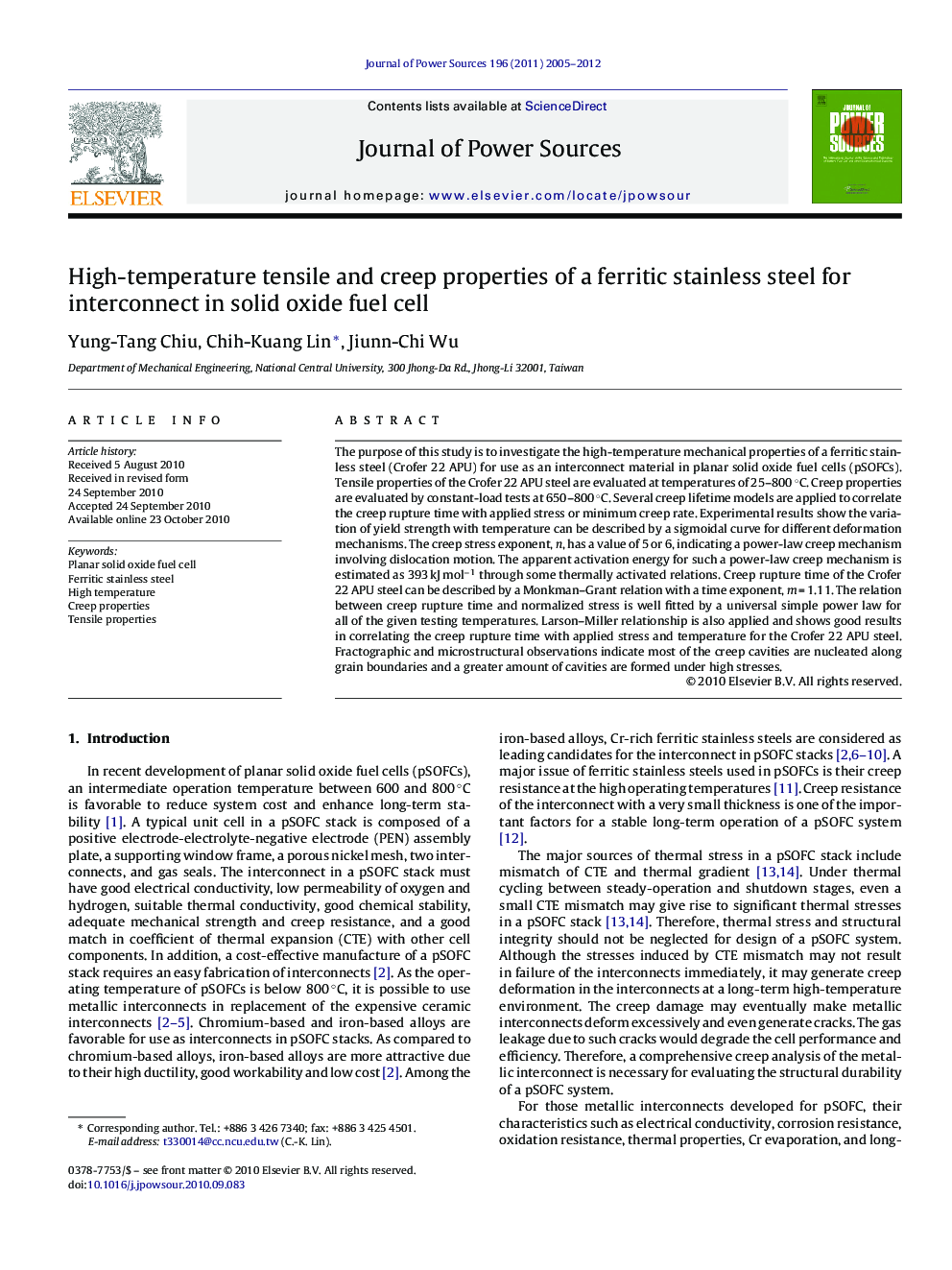| Article ID | Journal | Published Year | Pages | File Type |
|---|---|---|---|---|
| 1288862 | Journal of Power Sources | 2012 | 8 Pages |
The purpose of this study is to investigate the high-temperature mechanical properties of a ferritic stainless steel (Crofer 22 APU) for use as an interconnect material in planar solid oxide fuel cells (pSOFCs). Tensile properties of the Crofer 22 APU steel are evaluated at temperatures of 25–800 °C. Creep properties are evaluated by constant-load tests at 650–800 °C. Several creep lifetime models are applied to correlate the creep rupture time with applied stress or minimum creep rate. Experimental results show the variation of yield strength with temperature can be described by a sigmoidal curve for different deformation mechanisms. The creep stress exponent, n, has a value of 5 or 6, indicating a power-law creep mechanism involving dislocation motion. The apparent activation energy for such a power-law creep mechanism is estimated as 393 kJ mol−1 through some thermally activated relations. Creep rupture time of the Crofer 22 APU steel can be described by a Monkman–Grant relation with a time exponent, m = 1.11. The relation between creep rupture time and normalized stress is well fitted by a universal simple power law for all of the given testing temperatures. Larson–Miller relationship is also applied and shows good results in correlating the creep rupture time with applied stress and temperature for the Crofer 22 APU steel. Fractographic and microstructural observations indicate most of the creep cavities are nucleated along grain boundaries and a greater amount of cavities are formed under high stresses.
